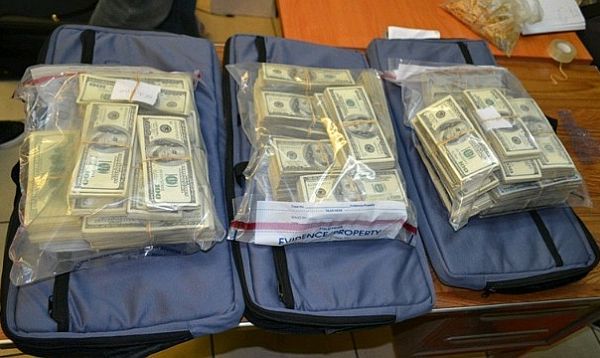Criminals are smuggling an estimated $30 billion in US currency into Mexico each and every year from the United States, but support could be on the way for border guards.
The answer to the dilemma: a transportable device that identifies certain vapors given off by US paper income. Scientists will present the new research at the 248th National Meeting & Exposition of the American Chemical Society, being held in San Fransisco, California, August 10-14, 2014.
In the past fiscal year, law enforcement officials say they uncovered more than $106 million in smuggled cash headed from the United States to Mexico. But this was only a small portion of the billions that made it across the border undetected — hidden among belongings, in clothing, or elsewhere. The bulk of that currency is laundered drug money. Travelers crossing the US/Mexico border are required to report cash or endorsed checks over $10,000. If they don't declare larger sums, the money that is found can be seized.
"We're developing a device that mimics the function of trained dogs 'sniffing' out concealed money, but without the drawbacks, such as expensive training, sophisticated operators, down time, and communication limitations," says Suiqiong Li, Ph.D., a member of the research team. "The system would extract gas samples from the traveler or from bags, vehicles, and shipping containers. It would detect the trace currency emission signature even in the presence of car exhaust, perfumes, and food, and at a range of temperatures, atmospheric pressures, and relative humidity."
Li says the technique, known as the Bulk Currency Detection System, or BCDS, should work effectively within the seconds or minutes it takes for border inspections. It involves gas chromatography/mass spectrometry (GC/MS,) a widely used analytical technique.
 |
The BCDS is being designed to find the emissions signature of the currency despite the presence of strong background gases and contaminants. It would be an automated, hidden-money screening system, using GC/MS plus solid-phase microextraction and a thermal desorption technique. BCDS would automatically extract, preconcentrate, and analyze the gases, Li explains.
When developing the device, the researchers first had to figure out which gases money emits and how fast that happens. It turned out that the gases are a set of trace chemicals, including aldehydes, furans, and organic acids.
"We have found that US currency emits a wide range of volatile organic compounds that make up a possible 'fingerprint' that we can identify in less than a minute," explains Joseph Stetter, Ph.D., principal investigator for the study.
Stetter and Li are with KWJ Engineering, Inc.
According to Stetter, this is the first report of the feasibility of sampling emission rates with a practical, money-detecting device. To capture the gases, which are specific to US paper money, guards would pass a probe over clothing or into baggage. If the probe detects a high intensity of the gases, it will indicate that large amounts of money are more than likely present.
The researchers say the device should lead to a significant improvement in detecting smuggled currency and have a strong economic impact for the United States. Stetter estimated that it would take from two to three years to develop the device for use by border guards.
Original Story


